Introduction to Critical Congenital Heart Conditions in Pediatrics
Understanding Critical Congenital Heart Defects (CCHDs)
Critical congenital heart defects are severe structural abnormalities of the heart present at birth, affecting approximately 1 in every 100 newborns in the United States. These conditions comprise roughly 25% of all congenital heart defects and often require urgent intervention within the first year of life.
The Role of Pediatric Cardiology
Pediatric cardiology plays an essential role in the early diagnosis and ongoing management of CCHDs. Specialized pediatric cardiologists utilize advanced diagnostic tools such as fetal echocardiography, pulse oximetry screening, ECG, and cardiac MRI to identify these conditions prenatally or shortly after birth.
Early Detection and Lifelong Care
Timely detection through newborn screening programs is critical, potentially improving survival rates and quality of life. Management approaches vary widely and may include medication, catheter-based procedures, surgical interventions, and in some cases, heart transplantation.
Children with CCHDs require comprehensive, lifelong monitoring with a multidisciplinary care team to address evolving health needs and optimize outcomes from infancy through adulthood.
Key Facts List on Congenital Heart Defects
- Tetralogy of Fallot (TOF) is the most common cyanotic congenital heart defect involving four anatomical abnormalities.
- TOF features include Ventricular Septal Defect, Pulmonary Stenosis, Overriding Aorta, and Right Ventricular Hypertrophy.
- Symptoms of TOF typically include cyanosis, rapid breathing, poor feeding, and irritability in early infancy.
- Diagnosis involves fetal echocardiography prenatally and pulse oximetry postnatally, confirmed with echocardiogram.
- Treatment for TOF consists of early surgical repair involving closing VSD and relieving pulmonary stenosis, with good long-term survival.
- Hypoplastic Left Heart Syndrome (HLHS) involves underdevelopment of the left heart structures and requires staged surgeries or transplant.
- HLHS patients depend on right-sided heart circulation and often undergo procedures such as Norwood, Glenn, and Fontan surgeries.
- Transposition of the Great Arteries (TGA) causes reversal of the aorta and pulmonary artery, leading to inadequate oxygenation and requires urgent surgery.
- In TGA, Prostaglandin E1 maintains ductal patency, and arterial switch operation corrects the anatomical reversal.
- Total Anomalous Pulmonary Venous Return (TAPVR) involves abnormal connection of pulmonary veins to the right side of the heart, requiring surgical rerouting.
1. Tetralogy of Fallot: The Most Common Cyanotic Heart Defect
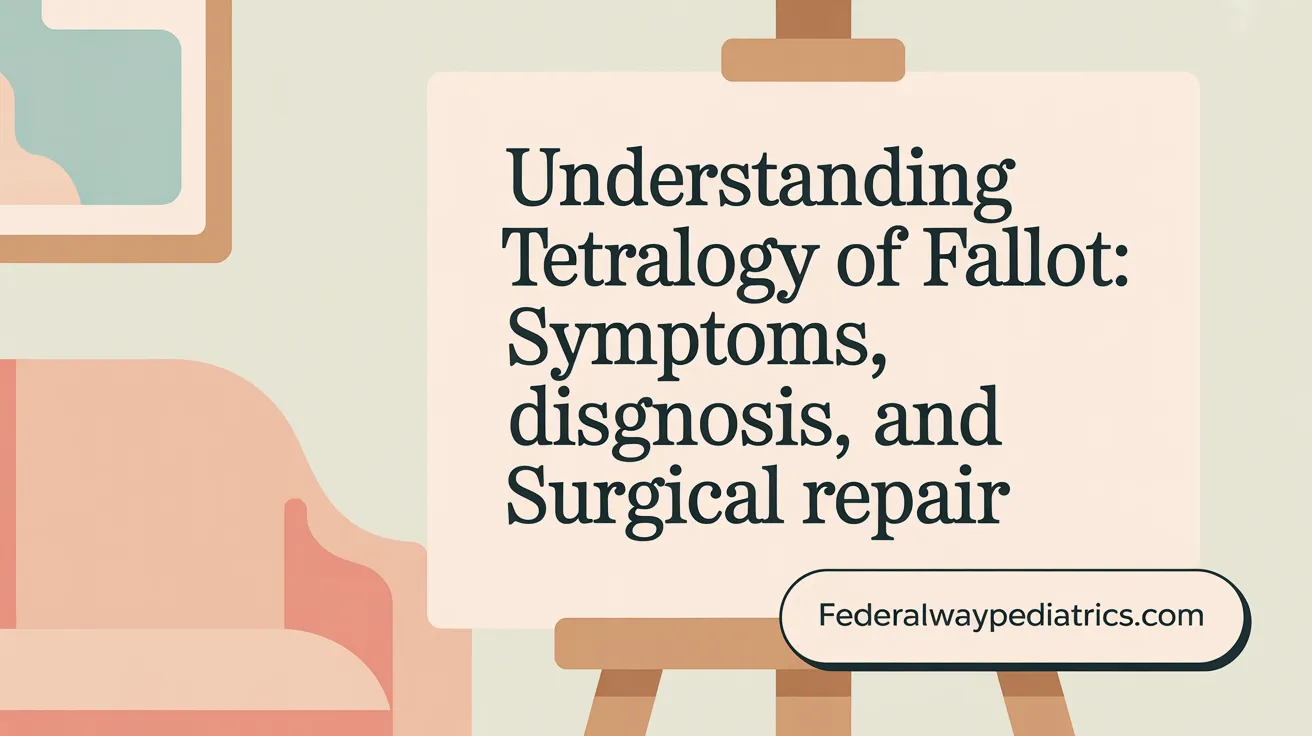
What is Tetralogy of Fallot and why is it critical?
Tetralogy of Fallot (TOF) is the most common cyanotic congenital heart defect, characterized by four anatomical abnormalities of the heart. These defects cause oxygen-poor blood to bypass the lungs and enter systemic circulation, resulting in decreased oxygen levels in the body (cyanosis). This condition is critical as it leads to severe oxygen deprivation in newborns and generally requires early surgical repair to improve oxygen delivery and survival.
Anatomy and features of Tetralogy of Fallot
TOF includes four heart defects:
- Ventricular Septal Defect (VSD) : a hole between the right and left ventricles
- Pulmonary Stenosis : narrowing near or at the pulmonary valve, obstructing blood flow to the lungs
- Overriding Aorta: the aorta is positioned above the VSD, receiving blood from both ventricles
- Right Ventricular Hypertrophy: thickening of the right ventricular muscle due to increased workload
These combined abnormalities disrupt normal blood flow and oxygenation.
Symptoms such as cyanosis and rapid breathing
Infants and children with TOF often show hallmark signs including:
- Cyanosis: blue or pale gray skin indicating low oxygen levels
- Rapid breathing and shortness of breath
- Poor weight gain and feeding difficulties in infants
- Irritability and fatigue with activity
These symptoms typically appear in early infancy and require timely evaluation.
Diagnostic approaches including fetal echocardiography and pulse oximetry
TOF can often be detected prenatally via fetal echocardiography as early as 12 weeks of pregnancy using advanced imaging techniques, allowing for early diagnosis and perinatal planning.
Postnatally, screening with pulse oximetry measures blood oxygen saturation to identify critical congenital heart disease. Confirmatory diagnostics include echocardiograms, chest X-rays, and cardiac catheterization for detailed anatomical assessment.
Treatment options including surgical repair and long-term management
Management of TOF involves early surgical repair to close the ventricular septal defect and relieve pulmonary stenosis, typically performed in infancy.
Some children may require staged surgeries depending on severity. Postoperative care includes regular cardiology follow-up, medications, and monitoring for arrhythmias or residual defects, as part of lifelong management.
Prognosis and survival rates
Thanks to advances in surgery and care, survival rates for children with TOF have greatly improved, with approximately 75% surviving the first year without critical complications and many living into adulthood with ongoing management and regular pediatric cardiology care.
Long-term outcomes depend on the timeliness of diagnosis and completeness of surgical correction, underscoring the importance of early detection and specialized pediatric cardiology support.
2. Hypoplastic Left Heart Syndrome: A Severe Left-Sided Heart Defect
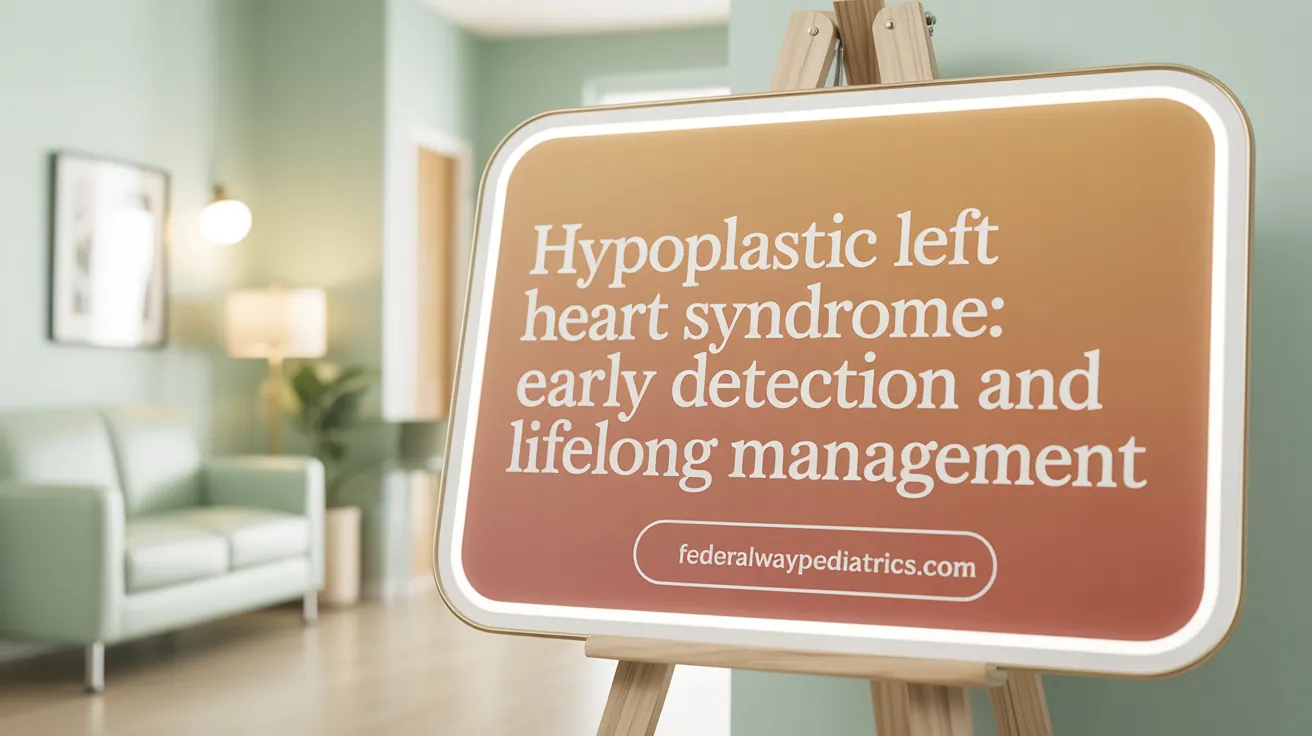
What is Hypoplastic Left Heart Syndrome (HLHS)?
HLHS is a complex congenital heart defect characterized by the underdevelopment of the left side of the heart, including the left ventricle, mitral valve, aortic valve, and ascending aorta. This severe abnormality significantly impairs the heart's ability to pump oxygenated blood to the body.
How does HLHS affect blood flow?
Due to the underdeveloped left heart structures, blood circulation relies on the right side of the heart and a patent ductus arteriosus to supply the body with oxygen-rich blood. Without surgical intervention, this insufficient blood flow causes serious health risks.
What are the clinical signs of HLHS in infants?
Infants with HLHS often present with cyanosis—bluish or pale-gray skin coloration—due to low oxygen levels. They may also show poor feeding, rapid breathing, fatigue, and failure to gain weight effectively.
How is HLHS diagnosed prenatally and managed postnatally?
HLHS can often be detected during pregnancy through detailed fetal echocardiography, allowing early planning for specialized care at birth. Postnatal diagnosis is confirmed via echocardiograms and pulse oximetry screening. Immediate care focuses on maintaining ductus arteriosus patency with medication to support blood flow.
What are the treatment options for HLHS?
Treatment typically involves a series of staged surgical palliation procedures—most commonly the Norwood, Glenn, and Fontan operations—that reconstruct circulation to compensate for the underdeveloped left heart. In some cases, heart transplantation is considered.
What are the long-term care challenges and survival outlook?
Children with HLHS require lifelong cardiology follow-up due to risks of heart failure, arrhythmias, and developmental challenges. Advances in surgical techniques have improved survival rates, with many patients living into adolescence and adulthood, though ongoing medical care remains critical.
What causes Hypoplastic Left Heart Syndrome and how is it managed?
HLHS results from abnormal heart development during early fetal life, with exact causes often unknown but potentially involving genetic and environmental factors. Management combines staged reconstructive surgeries or transplant, along with comprehensive lifelong cardiac care to optimize health outcomes.
3. Transposition of the Great Arteries: Life-Threatening Circulation Reversal
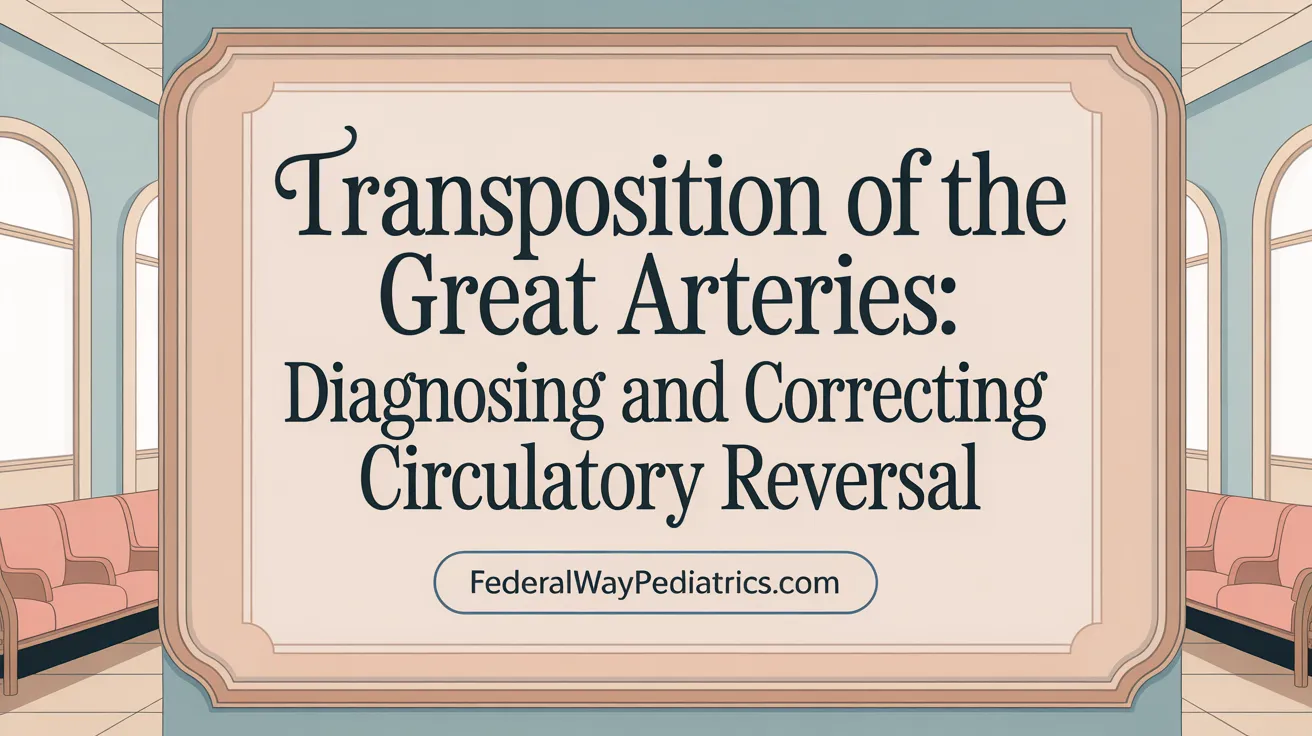
What is Transposition of the Great Arteries and how does it affect blood flow?
Transposition of the Great Arteries (TGA) is a critical congenital heart defect where the two main arteries leaving the heart—the aorta and the pulmonary artery—are reversed. This anatomical reversal causes oxygen-poor blood to circulate through the body while oxygen-rich blood cycles back to the lungs, resulting in insufficient oxygen delivery to the body’s tissues.
What symptoms should parents watch for in newborns?
Newborns with TGA typically show early and severe symptoms, such as cyanosis—a bluish tint to the skin and lips—alongside lethargy, rapid breathing, and poor weight gain due to inadequate oxygenation. These are common symptoms of cyanotic heart defects including TGA.
How is TGA diagnosed shortly after birth?
Early diagnosis is vital for improving outcomes. Pulse oximetry screening, which measures oxygen saturation in the blood, helps detect hypoxemia indicative of TGA. Confirmation involves echocardiography, an imaging test that visualizes the heart’s structure and function.
What emergency treatments are necessary before surgery?
To manage the life-threatening condition, infants often receive Prostaglandin E1 use in congenital heart defects. This medical intervention maintains a crucial blood flow connection between the aorta and pulmonary artery, improving oxygen delivery while awaiting surgical correction.
What surgical options are available and what is the prognosis?
Surgical correction, typically the arterial switch operation, involves repositioning the aorta and pulmonary artery to their normal anatomical locations. With early intervention and specialized pediatric cardiac care, survival rates and long-term outcomes have significantly improved, with many children leading healthy lives post-surgery.
4. Coarctation of the Aorta: Narrowing That Impacts Blood Flow
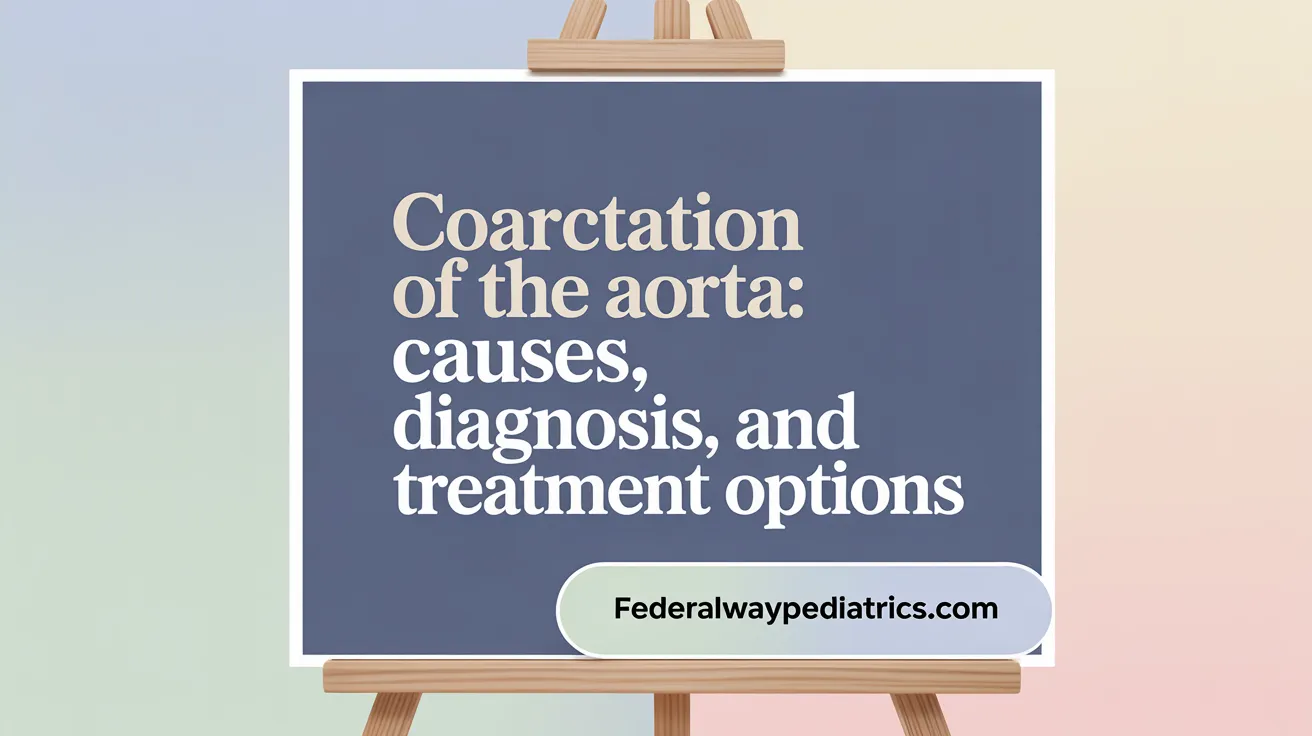
What is Coarctation of the Aorta and How Does It Affect the Heart?
Coarctation of the Aorta is a congenital heart defect characterized by a narrowing in a section of the aorta, the large artery that carries oxygen-rich blood from the heart to the body. This narrowing obstructs blood flow, causing increased blood pressure in the arteries before the constriction and strain on the heart as it works harder to pump blood through the narrowed segment.
Signs and Symptoms in Infants
In infants, Coarctation of the Aorta may present with symptoms of heart failure such as rapid breathing, poor feeding, fatigue, and swelling. Older children may exhibit high blood pressure and may experience headaches or leg cramps because of reduced blood flow downstream.
Diagnostic Testing
Diagnosis is primarily made through echocardiography, which uses ultrasound to visualize the heart and the aorta. Cardiac catheterization may be used to more precisely evaluate the narrowing and plan for interventions. Additional imaging like MRI or chest x-rays can support diagnosis and assess the impact on the heart.
Treatment Options
Treatment typically involves surgical repair to remove or bypass the narrowed portion of the aorta to restore normal blood flow. An alternative or adjunct treatment is balloon angioplasty for Coarctation of the Aorta, a catheter-based procedure to dilate the constricted area. The choice of treatment depends on the patient’s age, severity of narrowing, and overall health.
Long-Term Care and Potential Complications
After treatment, long-term follow-up with a pediatric cardiologist is essential to monitor for complications such as re-narrowing (recoarctation), persistent hypertension, or aneurysm formation at the repair site. Lifelong cardiac monitoring ensures timely management of any ongoing or emerging issues.
Table: Summary of Coarctation of the Aorta
| Aspect | Details | Description |
|---|---|---|
| Definition | Narrowing of the aorta | Causes obstruction and heart strain |
| Symptoms | High blood pressure, heart failure | Rapid breathing, poor feeding in infants |
| Diagnostic Tools | Echocardiogram, Cardiac catheterization | Imaging to evaluate narrowing and heart impact |
| Treatment | Surgery, Balloon angioplasty | Restoration of blood flow through repair |
| Follow-Up | Lifelong cardiology monitoring | Preventing complications and managing recurrence |
5. Pulmonary Atresia: Blockage of Blood Flow to the Lungs
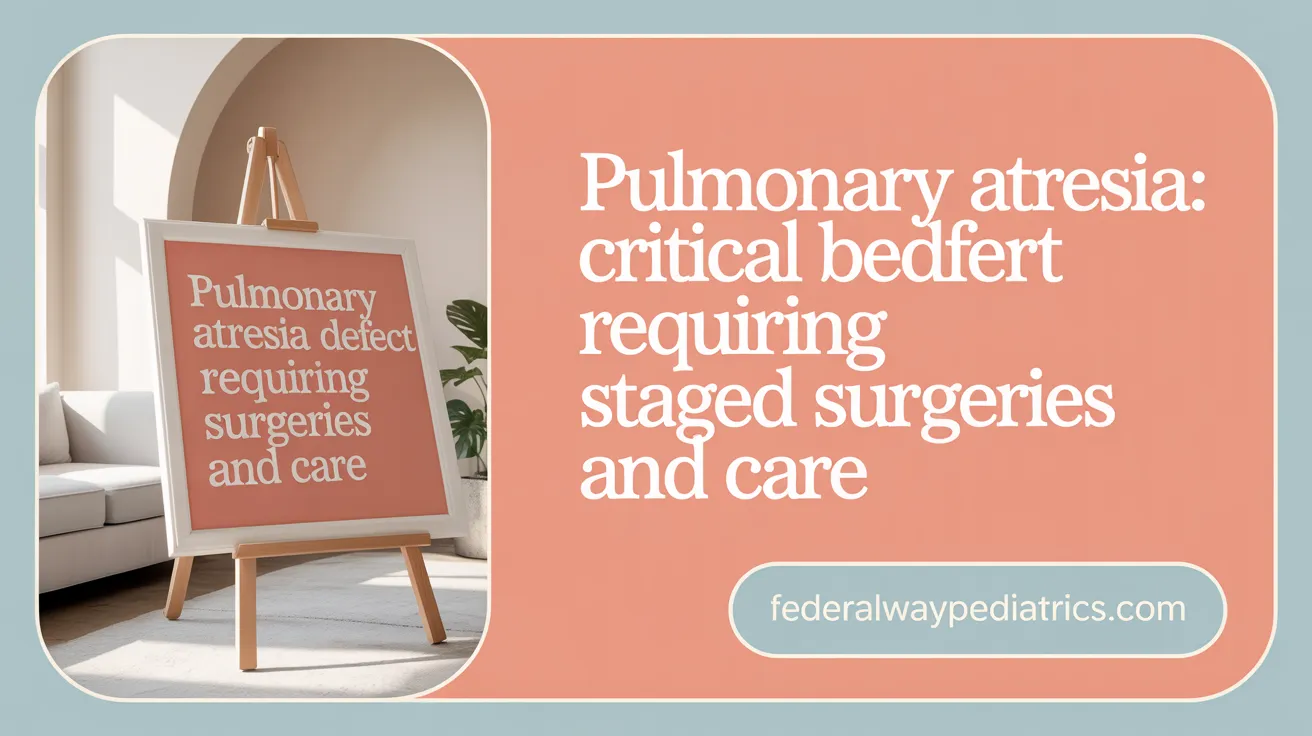
What is Pulmonary Atresia?
Pulmonary Atresia is a rare and severe congenital heart defect characterized by the absence or severe narrowing of the pulmonary valve. This valve normally allows blood to flow from the right ventricle of the heart to the lungs to receive oxygen. In Pulmonary Atresia, blood flow to the lungs is blocked, which critically impairs oxygenation of the blood.
Symptoms and Early Diagnosis
Infants with Pulmonary Atresia often show symptoms of congenital heart defects at birth or shortly thereafter. These include cyanosis, where the skin, lips, or nails have a bluish tint due to low oxygen levels. Respiratory distress and rapid breathing may also be present. Early diagnosis is crucial and is typically made with advanced imaging techniques such as echocardiography, cardiac MRI, and sometimes fetal echocardiography during pregnancy.
Diagnostic Imaging and Importance of Early Detection
Early imaging enables healthcare providers to confirm the diagnosis and assess if there is an associated ventricular septal defect (VSD), which significantly influences treatment planning. Prompt diagnosis allows initiation of life-saving therapies to maintain blood circulation and oxygen delivery.
Treatment Approaches
Treatment starts immediately with prostaglandin E1 therapy to keep the ductus arteriosus open, allowing some blood flow to the lungs. Surgical interventions are required, often planned in multiple stages. These surgeries aim to create or improve pathways for blood to reach the lungs and may include procedures like shunt placement or eventual repair or reconstruction of heart structures. For more details, see Congenital Heart Defects Treatment.
Variants of Pulmonary Atresia
Pulmonary Atresia may occur with or without a ventricular septal defect. The presence of a VSD affects the surgical approach and timing. Without a VSD, the heart’s structure is more complex, necessitating specialized interventions.
Outcomes and Lifelong Care
While aggressive treatment has improved survival rates, Pulmonary Atresia requires lifelong cardiac follow-up. Children often need ongoing care from pediatric cardiologists to monitor heart function, manage complications, and support overall development.
What makes Pulmonary Atresia critical and what treatments are available?
Pulmonary Atresia is critical because the pulmonary valve is absent or blocked, halting blood flow to the lungs and preventing blood oxygenation. Treatments include prostaglandin therapy to maintain ductal patency and complex staged surgeries, followed by lifelong cardiac management to optimize health and growth. For more about treatment and management of critical congenital heart disease, see Critical Congenital Heart Defects Information.
6. Total Anomalous Pulmonary Venous Return: Abnormal Blood Flow to the Heart
What is Total Anomalous Pulmonary Venous Return and How is it Treated in Children?
Total Anomalous Pulmonary Venous Return (TAPVR) is a rare congenital heart defect (CHD) categorized as a Mixing lesion congenital heart defects. In this condition, the pulmonary veins, which normally carry oxygen-rich blood from the lungs to the left atrium, connect abnormally to the right atrium or to systemic veins. This misconnection causes oxygenated blood to mix with deoxygenated blood, resulting in reduced oxygen delivery to the body.
How Pulmonary Veins Connect Abnormally, Causing Oxygen-Rich Blood to Return to the Wrong Heart Chamber
In TAPVR, instead of oxygen-rich blood flowing into the left atrium to be pumped to the body, it returns to the right side of the heart where it mixes with oxygen-poor blood. This abnormal blood flow increases pressure and workload on the right heart and lungs, often leading to congestive symptoms and inefficient circulation. This condition falls under the broader category of cyanotic heart disease and is one of the Critical congenital heart defect screening.
Clinical Presentation Including Cyanosis and Respiratory Distress in Newborns
Newborns with TAPVR typically present with Symptoms of congenital heart defects—a bluish discoloration of the skin, lips, and nail beds—due to low oxygen levels. Other signs include rapid breathing, difficulty feeding, and respiratory distress. Early symptoms arise because the abnormal blood flow disrupts normal oxygenation and cardiac function, consistent with Signs of serious congenital heart defects.
Diagnostic Tools and Importance of Early Surgical Repair
Diagnosis of TAPVR involves Echocardiogram for children to visualize abnormal venous connections, supplemented by Cardiac MRI imaging, chest X-ray, and sometimes Cardiac catheterization in children. Prenatal diagnosis by Fetal echocardiogram screening can identify the defect before birth, enabling planned intervention. Early surgical repair is critical, often performed soon after birth to reroute the pulmonary veins to the left atrium and close any associated defects, restoring normal blood flow. This approach is highlighted in Pediatric Heart Conditions Treatment.
Treatment Outcomes and Challenges of Long-Term Management
With timely surgery and specialized care, many children achieve good outcomes, though some may face challenges such as Pulmonary Hypertension in children or residual obstruction of venous pathways. Lifelong management of congenital heart defects with pediatric cardiology is essential to monitor cardiac function and manage potential complications to support optimal quality of life and health.
Advancements and Hope in Managing Critical Pediatric Heart Conditions
Early Diagnosis and Multidisciplinary Care
Early detection through advanced fetal echocardiography and newborn screenings such as pulse oximetry has revolutionized the management of critical congenital heart defects (CCHD). Diagnosing heart defects as early as 12 weeks of pregnancy allows for timely interventions and detailed care planning.
A multidisciplinary team approach – involving pediatric cardiologists, surgeons, genetic counselors, and nursing specialists – ensures comprehensive care tailored to the unique needs of each child. This collaboration improves the accuracy of diagnosis, optimizes treatment strategies, and supports family education.
Improved Survival and Quality of Life
Thanks to major advances in medical and surgical treatments, survival rates for children born with critical heart defects have significantly increased. Approximately 75% of infants with CCHD survive to their first year, with about 69% reaching adulthood.
Improvements in catheter-based procedures, cardiac surgery, and lifelong management have enhanced not only longevity but also the quality of life. Many children can now engage in regular activities, benefiting from ongoing therapies and lifestyle modifications supported by their care team.
Lifelong Management and Family Support
Dedicated pediatric cardiology centers provide lifelong monitoring that is vital for managing complex heart conditions. These centers offer ongoing evaluations, treatment adjustments, and neurodevelopmental support.
Family-centered care includes emotional support and education to help parents and caregivers understand their child’s condition and participate actively in care decisions. This comprehensive support system improves overall outcomes and addresses developmental and mental health concerns.
Continued Research and Awareness
Despite significant progress, continued research is essential to further improve treatment techniques and long-term outcomes for children with critical heart conditions.
Ongoing efforts focus on developing minimally invasive procedures, genetic studies, and innovative devices designed specifically for pediatric patients.
Increased public awareness and education about congenital heart defects support early detection and access to specialist care, ultimately saving lives and giving families hope for the future.
